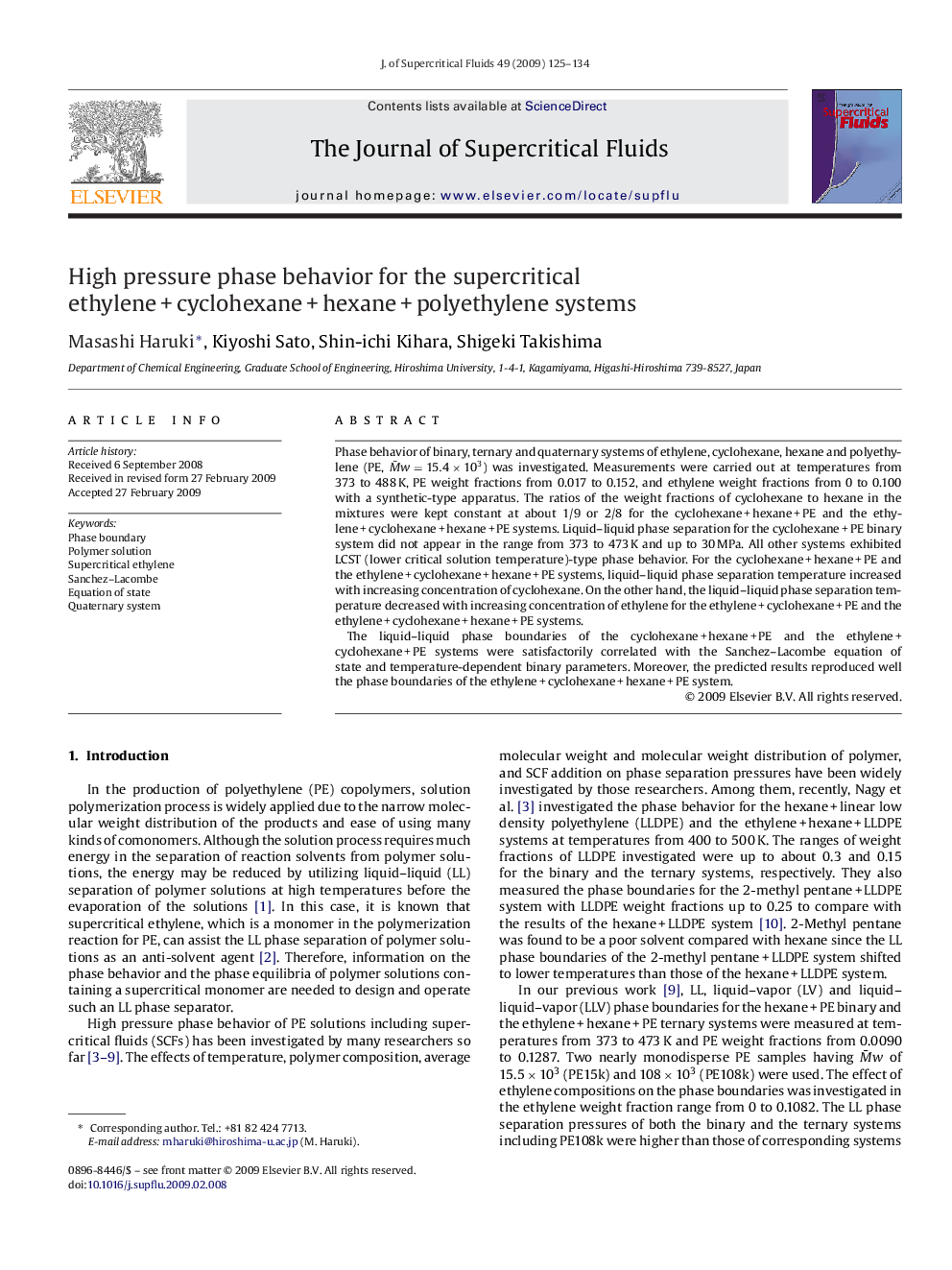| Article ID | Journal | Published Year | Pages | File Type |
|---|---|---|---|---|
| 231651 | The Journal of Supercritical Fluids | 2009 | 10 Pages |
Phase behavior of binary, ternary and quaternary systems of ethylene, cyclohexane, hexane and polyethylene (PE, M¯w=15.4×103) was investigated. Measurements were carried out at temperatures from 373 to 488 K, PE weight fractions from 0.017 to 0.152, and ethylene weight fractions from 0 to 0.100 with a synthetic-type apparatus. The ratios of the weight fractions of cyclohexane to hexane in the mixtures were kept constant at about 1/9 or 2/8 for the cyclohexane + hexane + PE and the ethylene + cyclohexane + hexane + PE systems. Liquid–liquid phase separation for the cyclohexane + PE binary system did not appear in the range from 373 to 473 K and up to 30 MPa. All other systems exhibited LCST (lower critical solution temperature)-type phase behavior. For the cyclohexane + hexane + PE and the ethylene + cyclohexane + hexane + PE systems, liquid–liquid phase separation temperature increased with increasing concentration of cyclohexane. On the other hand, the liquid–liquid phase separation temperature decreased with increasing concentration of ethylene for the ethylene + cyclohexane + PE and the ethylene + cyclohexane + hexane + PE systems.The liquid–liquid phase boundaries of the cyclohexane + hexane + PE and the ethylene + cyclohexane + PE systems were satisfactorily correlated with the Sanchez–Lacombe equation of state and temperature-dependent binary parameters. Moreover, the predicted results reproduced well the phase boundaries of the ethylene + cyclohexane + hexane + PE system.
Graphical abstractFigure optionsDownload full-size imageDownload as PowerPoint slide
